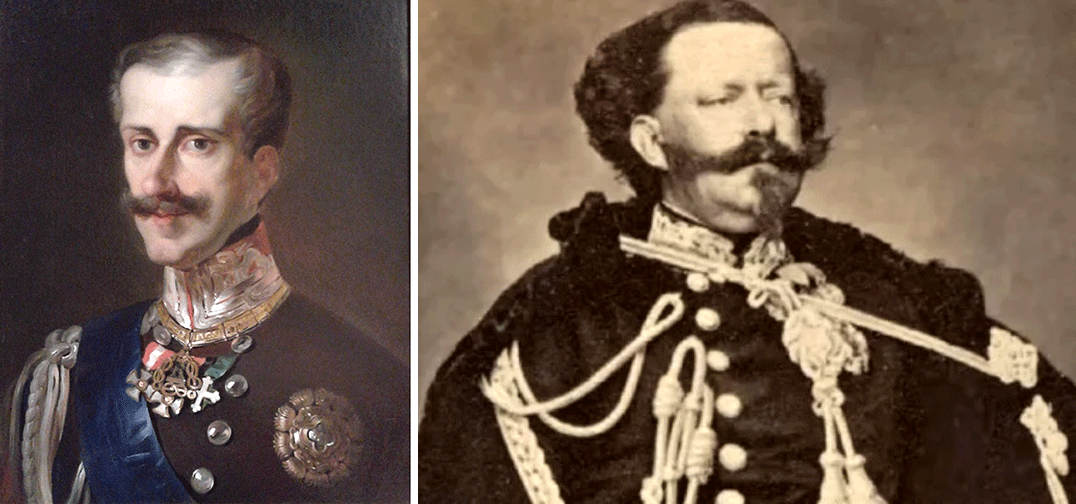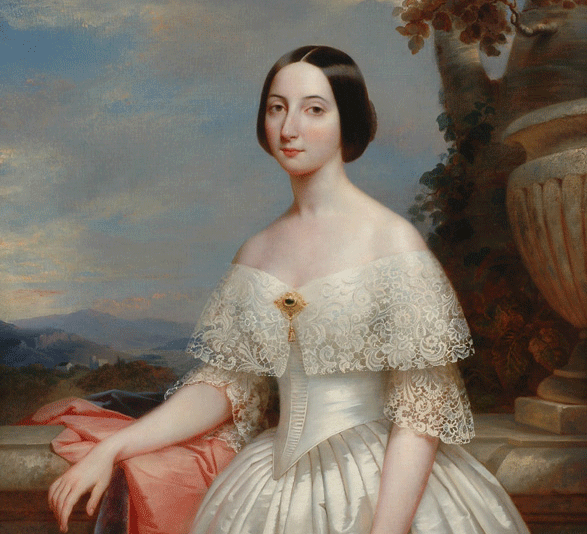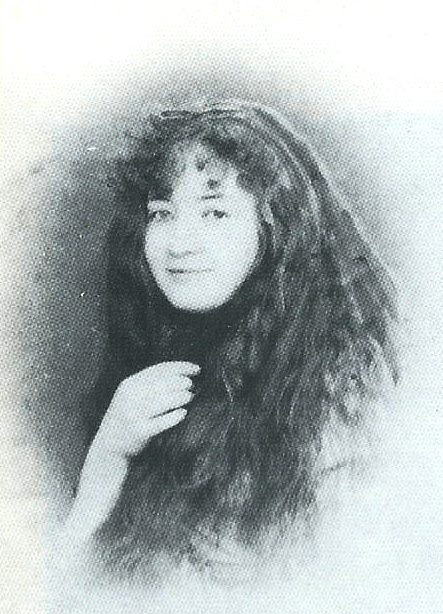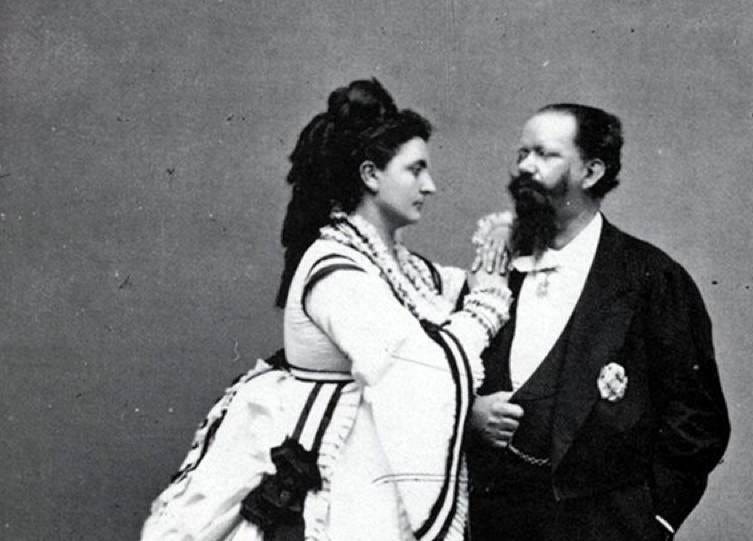 ittorio Emanuele Maria Alberto Ranieri Eugenio Ferdinando Tomaso of Savoy, the first king of a united Italy, was born in 1820 in Turin. From day one, the child proved to be so fundamentally different from his royal father, King Carlo Alberto, that the rumor he was illegitimate – or, even worse, that the infant prince died in his crib and a nurse placed a peasant baby in his place – started circulating almost immediately.
ittorio Emanuele Maria Alberto Ranieri Eugenio Ferdinando Tomaso of Savoy, the first king of a united Italy, was born in 1820 in Turin. From day one, the child proved to be so fundamentally different from his royal father, King Carlo Alberto, that the rumor he was illegitimate – or, even worse, that the infant prince died in his crib and a nurse placed a peasant baby in his place – started circulating almost immediately.
And that’s hardly surprising: Carlo Alberto, King of Sardinia, was six feet tall, with a pale, gaunt, austere face, and he lived an ascetic lifestyle better suited for a hermit than a monarch.
Vittorio Emanuele was of below-average height and stocky build, had bristly reddish hair and a large ruddy face, and looked more like some apprentice butcher than a crown prince.

And, much to his righteous parents’ despair, he also behaved like an apprentice butcher.
Unlike Carlo Alberto —an academic who sometimes wore a cilice as a way to mortify the flesh and often practiced fasting — Vittorio was a terrible student, a professional braggart, a womanizer, a drunkard and a glutton: he ate like a horse (with a strong preference for peasant foods like bean soup and garlic chicken), he cursed in three languages (Piedmontese dialect, Italian, and French) he gambled, and he chased skirts everywhere he went.
The future king didn’t care whether a young lady was a baroness or a farm girl, a seamstress or an actress: he seduced them all with no regrets and no remorse. He consumed his love affairs in palace halls and theatre dressing rooms as well as courtyards and barns: Vittorio was not the squeamish sort.
He loved life and wanted to live it fully.
In 1842, Vittorio had to marry his first cousin, Archduchess Maria Adelaide of Austria: a pale, tall, slender 22-year-old girl. Adelaide was everything a 19th-century king could look for in a wife: she was sweet, quiet, well-educated, and very pious; she could speak many languages and dance gracefully, she was able to converse on a variety of subjects and she was very good at embroidering. Despite her massive wardrobe (her wedding trousseau consisted of 2,284 articles of clothing, including dresses, fur coats, shawls, capes, and bonnets) she always dressed very modestly. She was also rather pretty, in her own anemic way.

Their marriage lasted thirteen years and the pale Archduchess delivered eight children. Vittorio eventually grew very fond of his wife, but he liked more, er, voluptuous ladies. Adelaide, an algid Habsburg beauty, was too colorless, too thin, too virtuous for his taste. The prince liked Rubenesque thighs, wide hips, opulent breasts, plump cheeks, red lips.
And a fiery attitude was a bonus.
Rosa Vercellana, the youngest daughter of an officer in the King’s Guards, had all of this and more. The very embodiment of Vittorio’s ideal woman, she was a fun, bold, hot-blooded young thing, with a mass of dark curls and more curves than a country road. She was known as La Bella Rosina (‘Pretty Little Rosa’), and Vittorio — who was thirteen years her senior —fell head over heels for her.
Her rocking body was not the only thing the future king liked about her: Rosina shared all of Vittorio’s passions. Sure, she was illiterate and unsophisticated (she’d fix that detail later), but she was an accomplished horsewoman and a crack shot. She played cards and billiards better than most men, she enjoyed comedies a lot more than moral pieces – and boy, did she like her food!

Vittorio placed his young mistress in a splendid villa near his castle, where he visited her whenever he wanted to — that is to say, very often.
He felt like Rosina understood him, that she got him, and accepted him for who he was. And she did: there was a kinship between the two of them that went past physical attraction. They were both down-to-earth, straightforward, generous people with no patience for etiquette or formality; also, they both had quite a temper.
Rosina knew how to deal with Vittorio: she cooked him his favorite meals, patiently listened to his complaints, and made him laugh. She also bore him two children, Vittoria and Emanuele Alberto: the king loved them more than his legitimate ones, and he once said to a minister: “Look at those children! So healthy, so strong! Alas, the children the late Archduchess [Adelaide] gave me are far from being this vigorous!”
Vittorio never stopped seeing other women: Rosina knew all about them — she had a network of private detectives at her service — but she wasn’t one to complain. She knew better than to try and change Vittorio, and she was also aware that the last woman who tried to tie him down (actress Laura Bon, a previous mistress) was promptly given her marching orders. Rosina was sure Vittorio would never leave her, and he never did: when his wife Adelaide died, he made Rosina the first Countess of Mirafiori and Fontanafredda (a title he came up with just for her), moved in with her, and promised her he would never marry again, if not to her.
And he kept his promise: he dismissed all suggestions for a new royal consort — from princess Stephanie of Hohenzollern-Sigmaringen to Mary of Cambridge, from Mar’ja Nicolaevna, the favorite sister of the Russian Csar, to the Belgian princess Marie Charlotte. His response to all of them, a sound not a chance in hell, drove his ministers to despair: the fact that their sovereign lived in sin with a commoner was outrageous enough, but the idea that he could marry her was nothing short of blasphemy.

He stood his ground because, as he once wrote to his son-in-law, he and Rosina had “loved each other madly for twelve years” and he had already given her “his solemn word” that he would marry her as soon as he could.
Despite his promises, he wasn’t in a rush to put a ring on her. It took a health scare to convince him to actually go through with it: he finally married Rosina in a secret religious ceremony while bedridden with a very serious case of pneumonia.
Rosina became the wife of a king, but never a queen: theirs was a morganatic marriage (a union between people of unequal social rank), that prevented her from acquiring Vittorio’s titles and privileges. She would always be the Countess of Mirafiori and nothing more.
That didn’t bother her: she was content enough being his spouse. After Vittorio recovered from his illness, they went on living a quiet, stable family life: they were no longer as fierce as they had been in their youth, but their attachment to each other was still strong, as documented by the hundreds of vibrant love letters, notes and messages they exchanged any time they were apart.
This state of things lasted until Vittorio’s death, nine years later. After losing him, Rosina’s mental and physical health deteriorated: she died in 1885, seven years after her husband’s death. One of her final acts, a few days before she passed, was to order a wreath of violets to put on Vittorio’s grave, with a note reading “Always heartbroken.”

30-something, born and bred in Italy. If you leave me unattended in your house I will sand down and repaint every piece of furniture you own. Can’t parallel park to save my life.





